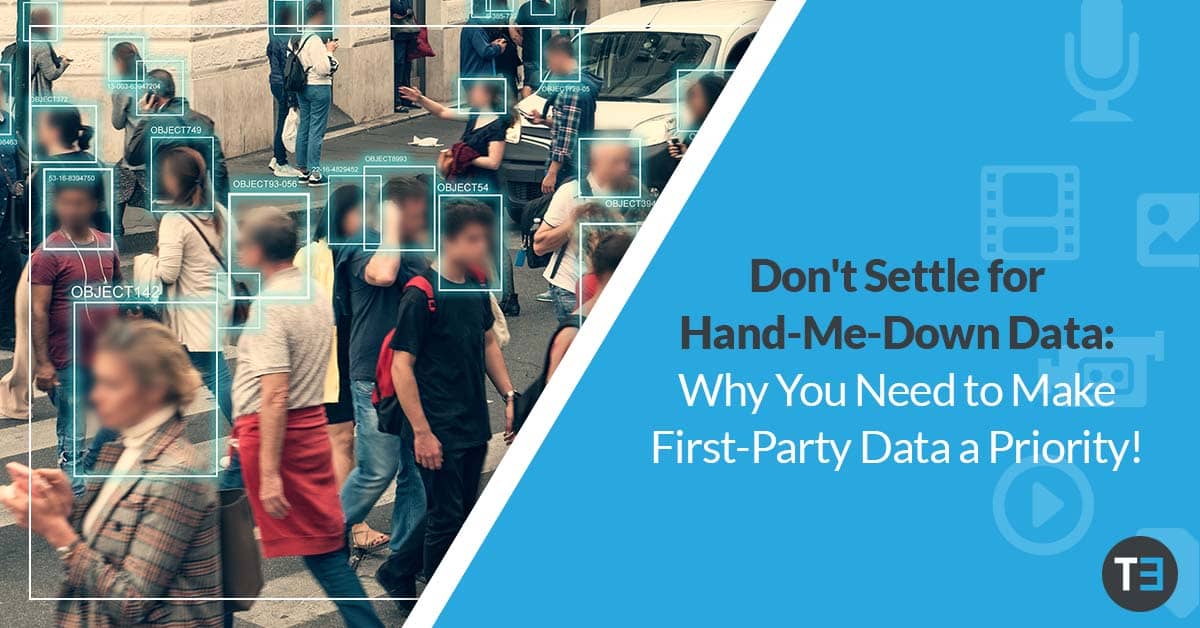How to Collect First-Party Data
7 Minute Read
Personalization is a key component of any successful digital marketing and advertising strategy. Customers expect that the information they see from brands will directly speak to their needs, goals, and experiences.
Data drives the ability of your business to personalize the customer experience, especially when it comes to digital advertising. Customer data can be divided into first-, second-, and third-party data. The “party” refers to what entity handles the data collection.
Without high-quality data on your customers, your digital advertising and marketing strategies are likely to fall flat . Unfortunately, the businesses that rely on third-party data will probably find that they’re screwed in the very near future with the removal of pixels and pixel tracking looming.
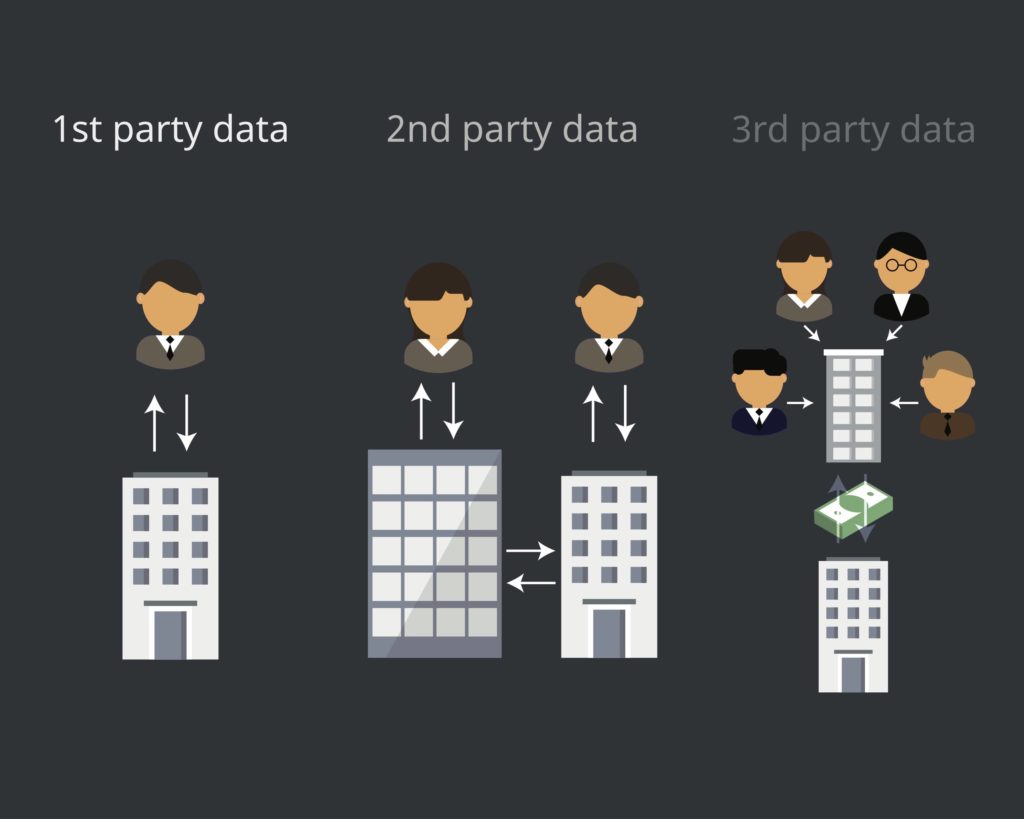
What Are the Different Types of Data?
Before we get into the best data for marketing and advertising (and why reliance on some types of data will soon become a liability rather than an asset), it is important to define the different kinds of data companies can leverage. Here is a crash course on the data used by brands and advertisers to reach their target audiences:
What Is First-Party Data?
First-party data is information about customers directly collected by businesses. Many companies harvest first-party data (such as first name, last name, email address, phone number, etc.) through actions performed by online users, This data is usually captured via form completions, newsletter signups, product purchases, etc.
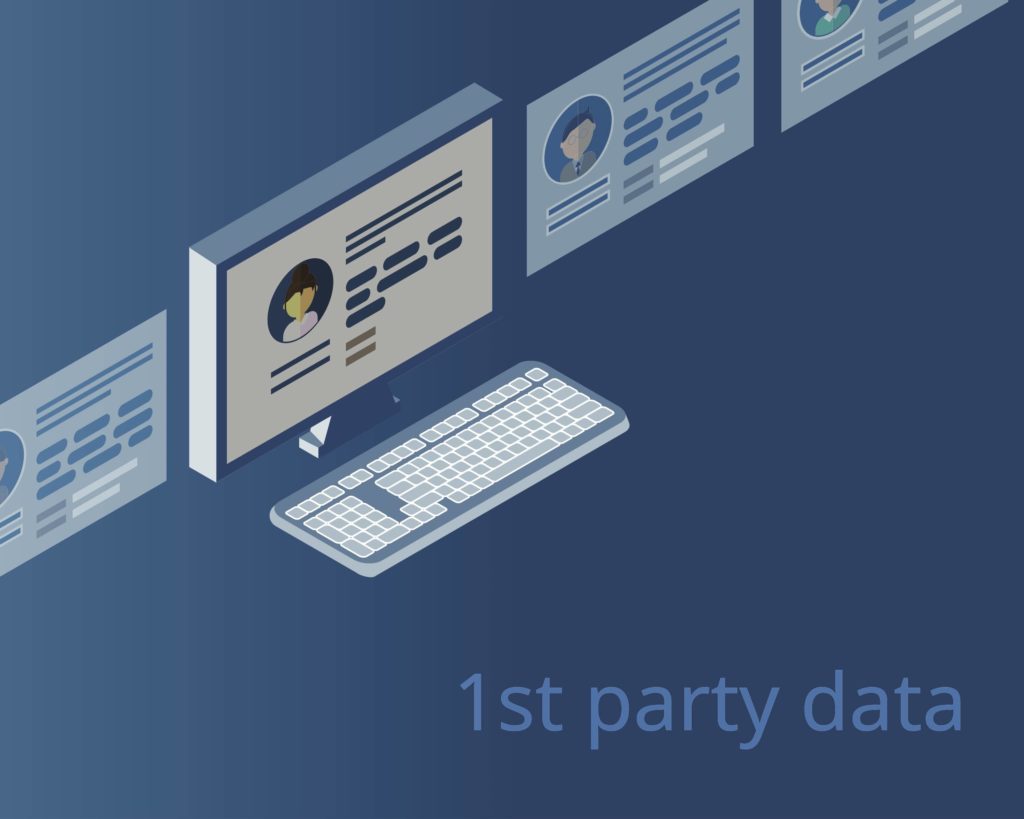
What Is Second-Party Data?
Second-party data is data gathered by organizations outside the business. Affiliates and partners that sell a company’s products collect data on customers, which can then be shared with your business.
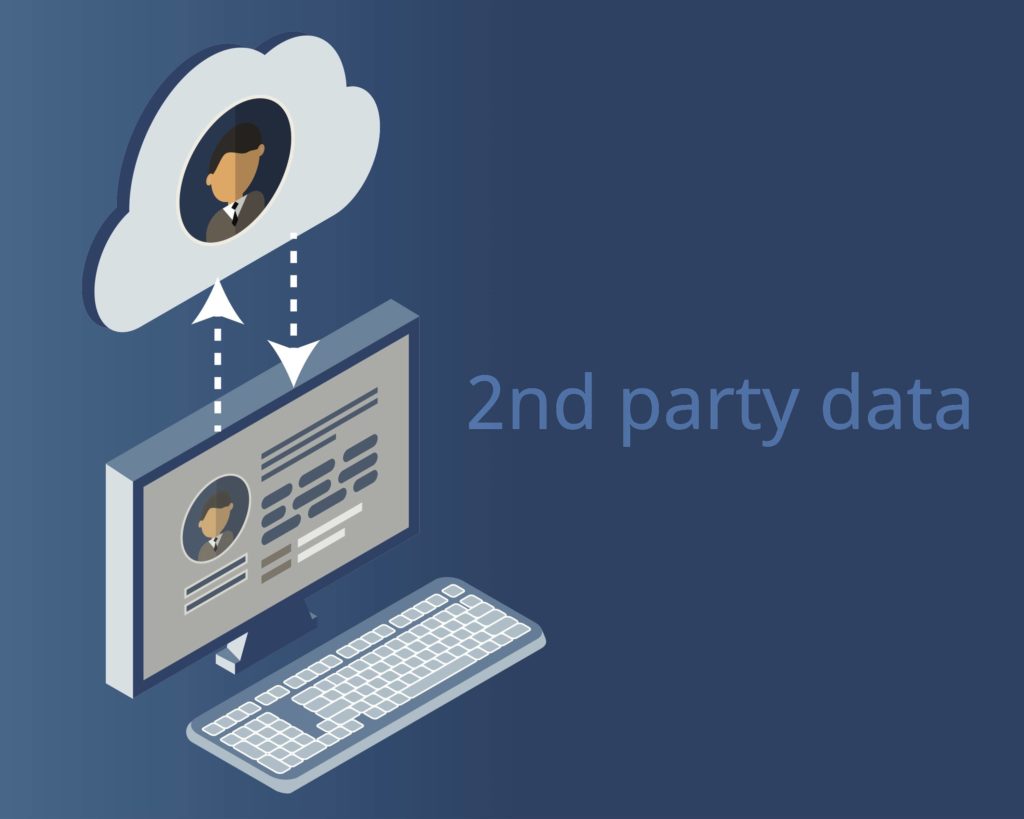
What Is Third-Party Data?
As the name suggests, third-party data is collected by (who else?) third parties. Data reported by the most popular digital advertising platforms (Google, Facebook, etc.) and information collected by paid services (such as Nielsen, Semrush, etc.) are both examples of third-party data sources.
It is important to distinguish, however, between platforms and software that gather their own data and report it to customers and those that aggregate data from multiple sources. Data in Google Analytics, for example, is first-party Google data reported to those with a Google Analytics account. If you use a third-party tool, the platform may rely on multiple APIs (application programming interfaces) to collect and assemble data.
You may see discrepancies between your Google data and the data from third parties. When you do, it is important to consider the source and recognize that the differences may stem from whether the tool collects data directly or draws on more than one API.
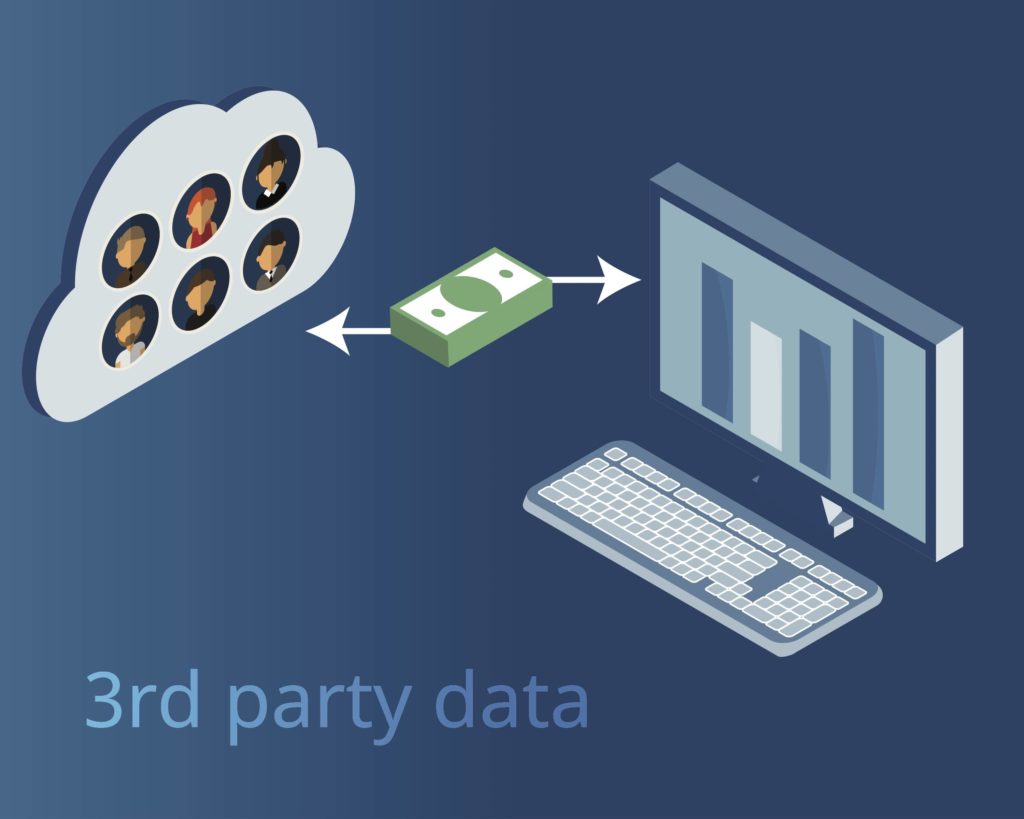
Why Third-Party Data Is in Trouble
For years businesses and advertisers have had access to incredible amounts of data about their customers. This era of unprecedented access is coming to an end.
Earlier this year, data protection agencies in France and Austria ruled that businesses using Google Analytics are in violation of the terms of the European Union’s General Data Protection Regulation (GDPR). Companies that advertise and do business in France and Austria face the risk of heavy fines if they continue to use Google Analytics and other platforms that export third-party data outside the EU without meeting standards for data protection.
No legislation in the United States is anywhere near as strict as GDPR. However, three states (California, Virginia, and Colorado) have already passed laws designed to protect consumers’ digital privacy, and more are likely to follow suit.
Change is coming on the tech industry side as well. After previously announcing an end to the support of third-party tracking pixels, Google clarified last year that it will not seek to create or support alternative means for third parties to track user behavior online.
So what does increased legal scrutiny, growing concerns among consumers about protecting their private information online, and recognition from big tech that open season on user data is over mean for advertisers?

What to Expect from Third-Party Data in the Near Future
Businesses and advertisers reliant on third-party data are likely to have less and less of the information they used in the past to create targeted campaigns. As a consequence, consumers are going to start seeing a lot of irrelevant ads, and the results for campaigns derived from third-party data are going to see a decline in results.
For all its talk about privacy, Google will remain a data powerhouse. This means that pay-per-click advertising and other strategies reliant on data from Google will still be a viable option for reaching customers via online search, video, and more (provided, of course, that the companies in question are not based in and/or doing business in parts of the world taking a hardline on data protection).
Likewise, we expect that larger ad exchanges have sufficient clout to keep their marketplaces stocked with attractive advertising offers. Savvy media buyers will be able to identify opportunities to reach their target consumers based on the publishers and websites offering ad inventory.
On the other hand, the availability and reliability of data from other sources is likely to shrink. As such, it is important to invest in other ways to get to know your target customers.

Why You Need First-Party Data
The business that gets closest to the consumer wins. Although third-party data can help businesses get to know a lot about their customers, it is crucial not to rely solely on third-party providers to handle data collection for you. If your third-party data is interrupted or cut off, you will lose the insights you need to forge a connection with your audience.
Partners providing second-party data can help fill in some of the gaps. However, the best remedy is for your business to take on some aspects of data collection yourself.
Investing time and effort in collecting first-party data is a way to future-proof your access to audience information. Building databases and audience segments on your own will be subject to much less volatility long-term than continuing to collect third-party data. Plus, getting to know your customers directly has enormous benefits for your customer interactions and your marketing and advertising as a whole.

How to Collect First-Party Data
So how can you collect data when customers have their guards up and third-party options are dwindling? The key is (a) to earn the user’s trust and (b) provide value for the information they give you.
Depending on your products and services, this could be as simple as refining your internal processes. For example, say you have a service where customers mail in old products for recycling when they buy new ones from you. If your business provides such a service, you should instruct your employees to collect each customer’s name and address so you can add it to your database.
Other ways to start building a strong database include:
- Build your brand. Before you can earn your customers’ trust, you need to invest time and thought into the identity you present and the messaging you use. This is branding, and it’s critical for cultivating an image that customers will find trustworthy and feel comfortable sharing their data with you.
- Scour your customer forms. If you have physical office locations and ask customers to fill out paperwork, you could have entire reams of valuable first-party data already in your filing cabinets.
- Take a deep dive into website interactions. You should be checking your analytics regularly to see who converts via your online forms, track lines, live chats, etc. You can use the information these users provide to identify key characteristics of your audience.
- Create premium downloadables. Want prospective customers to view your business as an authority that can help them through the buyer’s journey? Make them an offer they can’t refuse. Newsletters, custom PDFs, and other marketing materials are a great way to add value. In exchange for the download, ask users to provide their name and email address.
- Invest in lead generation campaigns. Facebook, LinkedIn, and other popular platforms offer robust options for lead gen campaigns. Even if driving online leads isn’t a priority for your business, these campaigns are a great way to collect first-party information from users on social media, Google, and other key online audiences.
It is also important to identify what constitutes the first-party data you need. At minimum, you need first names, last names, and email addresses to market to your database.
However, depending on the products and services you offer and the information you need to capture your customer’s interest, you may need more. Anything from bra size to the year, make, and model of a vehicle may be necessary to market to your audience effectively.
You can also use a tool like Similarweb to analyze the characteristics of people who visit your website and the websites for your competitors. The data can help you drill down on what types of users make up your audience and determine the best way to reach them through your marketing and ads.

Optimize Your First-Party Data Gathering Strategy
Most business owners don’t have a side hustle in data science. Although you might have a pretty good notion of who your customers are, actually reaching and engaging them online is a different matter entirely.
Our reputable marketing and advertising agency has the tools and the know-how to help you capture the data you need for successful campaigns. We keep our finger on the pulse of the industry and develop innovative strategies for helping you collect first-party data and integrate it into your marketing and ads while respecting users’ privacy.
Gain the unfair marketing advantage. Contact Twelve Three Media today to start getting the most from your digital advertising data!
